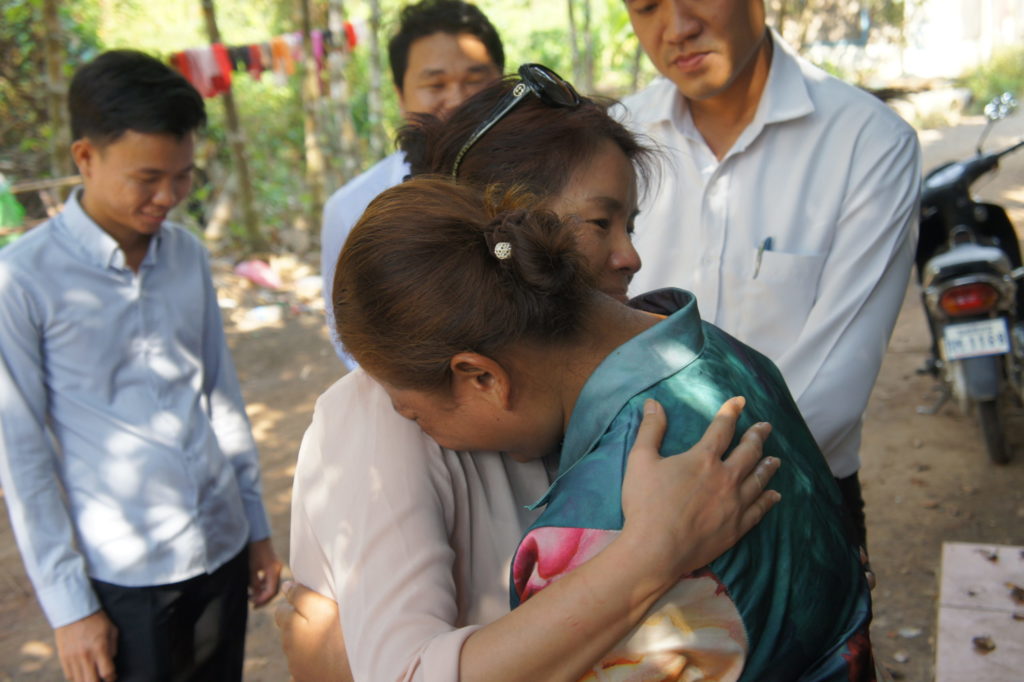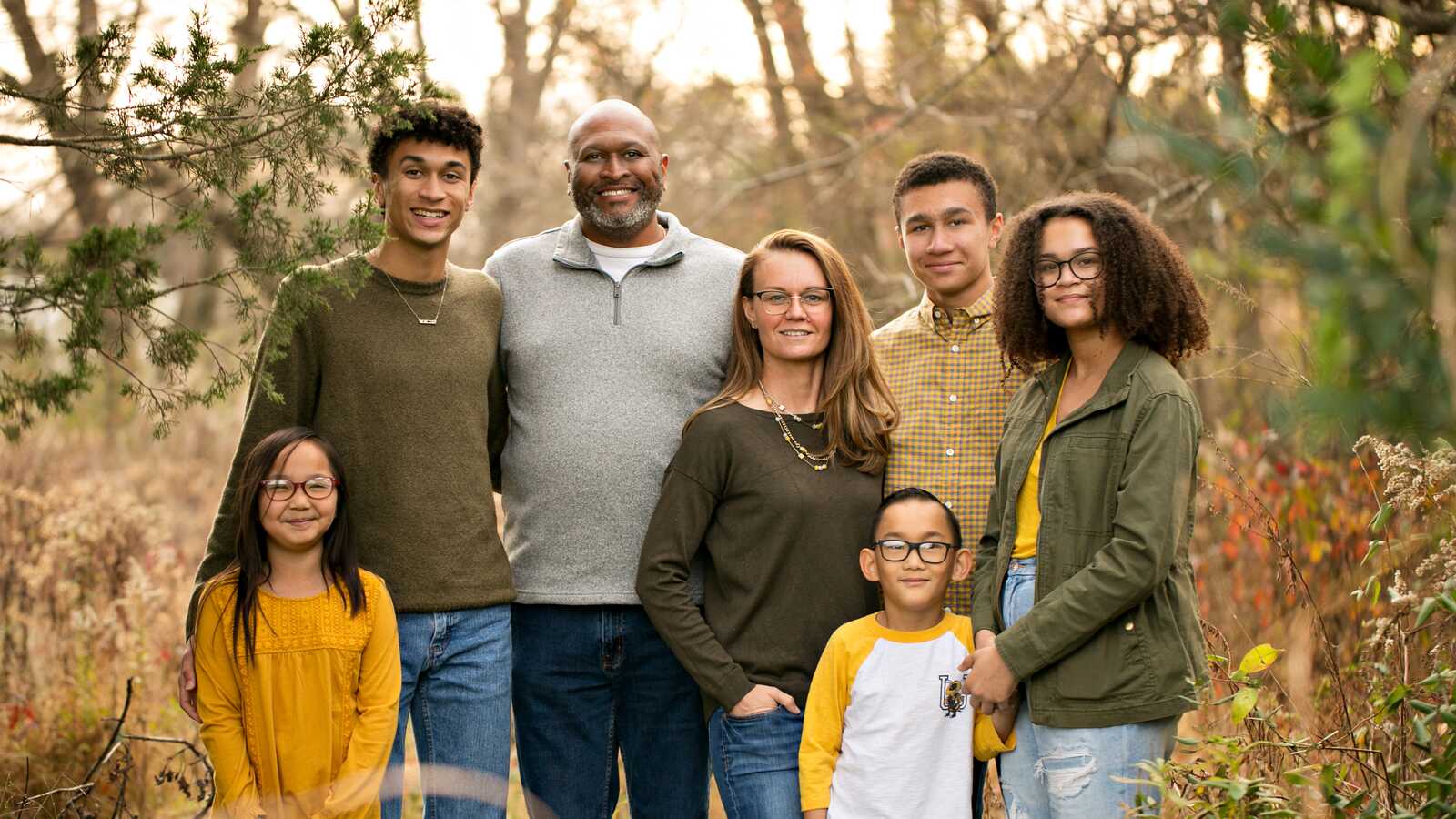Thoa Bui, Holt’s senior vice president of programs and services, is a Fulbright scholar who worked at Holt’s field office in her native Vietnam before joining Holt in the U.S. Here, Thoa shares how adoption practices have changed in countries that continue to unite children with families — and why it’s important that international adoption continue for children growing up in orphanages overseas.
Hoang was three and a half years old. More than 20 years ago, as a Holt social worker in my home country of Vietnam, I worked with children like Hoang. I met him a few times each week at the orphanage. Every time we met, his eyes were teary, but he could not communicate as he had severe speech delay. We hardly had access to professional speech therapists as they just did not exist more than 20 years ago in Vietnam. Looking into his teary eyes, I felt he wanted to communicate something to us about his needs. I was asking myself, what would happen if he did not receive the care and interventions he needed? Thankfully, he was adopted into a family in the U.S and later became a medical doctor.

Quan was born a healthy baby. One time, there was a meningitis outbreak at his orphanage and seven children were hospitalized. After treatment, all the children were discharged including Quan, but unfortunately, he lost much of his hearing. We were heartbroken as we knew that with very limited medical care available to children in orphanages, he would most likely experience full and permanent hearing loss. And if he grew up in Vietnam, he would struggle because our society was not equipped to offer the kind of care or support people with hearing impairment needed.
Quan was also adopted by an American family. Years later, in the U.S., I met him again. He had received the medical treatment he needed, had the equipment he needed to aid his hearing, and he was able to communicate with me. He and his adoptive parents let me know that he was thriving and had been admitted into classes for gifted students. At that very moment, I thought this was truly a miracle. Quan had a family who could meet his needs and help him achieve his fullest potential.
For these children, had they not received the care and love and interventions they needed — care provided by their adoptive families — permanent disability was no question.
Then I think of Tan.
Tan had cerebral palsy and was abandoned when he was only a few days old. We were not able to find an adoptive family for him. Once in a while, during my trips to Vietnam, I had the chance to visit him in the orphanage. The last I saw him, he was 23 years old, still living in a government care center for adults with disabilities. Had we found a family to adopt him and give him the treatment he needed, his life would have gone a much different direction.
Every Child Deserves a Family
I have been working in the field of international adoption and global child welfare for 23 years and have traveled and worked in numerous countries as a Holt team member. In the early days of my career, as a social worker in Vietnam, I worked with hundreds of children living in orphanages as well as their birth parents.
I also worked with many single mothers and parents who needed help caring for their children. The same as Holt social workers help families around the world today, I engaged parent(s) in various Holt programs that would help them provide for their children — from educational support, free daycare and nutrition and health services to economic empowerment programs that helped them earn a stable income.
All of these efforts were with one overarching goal in mind — preventing children from separating from their birth families.
These efforts were successful for hundreds of children and families that I worked with. Families were empowered with the tools and resources they needed to independently care for their children — and their children were able to thrive in the loving care of their families.
Unfortunately, there were — and always are — children who could not and cannot remain with their birth parents.

Some of them came into orphanage care after being found abandoned, their birth parents unknown. They were abandoned in hospitals, found at the front gates of orphanages, or found in any public places. Other children were formally relinquished by their birth parents and placed into orphanages for various reasons. In some cases, their parent(s) were imprisoned. In others, their parents had poor health and could not care for their child, or their child had a disability that required medical and therapeutic care that they could not afford. In Vietnam, as in many countries, single mothers faced a strong social stigma for having a child out of wedlock. Under great societal pressure, many of these women chose to relinquish their child. (Today, this stigma has lessened somewhat — and with support from Holt and other organizations, more single and unwed mothers are choosing to parent their children.)
At Holt International, we believe the best place for a child to grow up is in a family. But it’s not even a matter of belief. Over the years, there have been numerous evidence-based studies that show the long-term harm of institutionalization on the cognitive, physical and emotional wellbeing of children. This is why our mission is to help children grow up in families, not institutions.
Our number one priority is to help keep children with their birth families, whenever possible. For abandoned and relinquished children who cannot reunite with their families, we work with local partners and government authorities to find local adoptive parents so that they can remain in their countries and cultures.
But not every child can be adopted locally. This was and still is the situation today.
In Vietnam, as in most countries, adoptive parents were and are only open to young and healthy babies, not older children or children with medical, emotional and developmental needs. These children — children like Hoang and Quan and Tan — are the children who are at greatest risk to grow up in orphanages.
These are the children who are waiting for adoptive families through international adoption. For these children, it’s critical that international adoption continue. It’s not a perfect process, but it has changed tremendously over the decades to uphold the best interest of children.
How Adoption Has Changed in Countries Overseas
Over the past 23 years, I have seen how adoption has evolved from both sides — in foreign countries where vulnerable children and families we serve reside, and in the U.S. where we support adoptive families with their adoption process.
Here are a few of the changes I have witnessed in our partnering countries overseas:
Improved Counseling for Birth Families
One critical change I saw is how child welfare workers counsel birth parents who are in the process of relinquishing their child for adoption.
In many countries, these workers were not equipped to handle such an emotionally hard process working with birth mothers. But as social work practice has evolved in countries overseas, child welfare workers receive far more education about how best to work with birth parents. Critically, birth parents also receive options counseling to help them decide whether to parent or relinquish their child for adoption in the first place. With Holt support, parents can receive job skills training, help with food, nutrition and respite care, and other resources they would need to parent their child, if that is ultimately their choice.
More Preparation for Older Children
Today, more than 75% of the children placed for international adoption are now older than 5 years old — or they have special medical, developmental or emotional needs. For the older children, one change I have seen in overseas adoption practice is how they are prepared to join a family in a different country.
Everywhere Holt works, child welfare practitioners — from caregivers to orphanage staff to government officials — all agree that children need to be prepared and supported prior to an adoption placement. Across the globe, Holt has helped develop this pre-adoption preparation for children. Families are now requested to send photo albums and gifts to their adopted child. In some countries, they can attend video calls with their adopted child to help develop connection and bonding. Many orphanage staff and social workers prioritize discussing with the child about their new parents and family, about the culture or way of life in a new country, address their questions and fear, etc. This has helped ease the transition for many children as they join their adoptive families in the U.S.
Preserving a Child’s Health Information
Documentation of a child’s health information is another in-country facet of international adoption that has greatly improved through the years.
Today, child welfare practitioners and government authorities around the world understand more about the importance of documenting and preserving a child’s background and developmental information as soon as they enter into care — or even in the period of time before they enter care, if available and possible. When asked to share about a child’s health or development, I used to see child reports that described a child’s development in only one word — either “Normal” or “None” or “No.”
As the field of international child welfare in general and international adoption in particular has evolved, child welfare practitioners and government entities now put greater focus on training adoption workers to document detailed information about the children. Not only does this help adoption social workers in the U.S. and other countries as they seek the family best suited to meet the needs of each child, but it also equips potential families with information they need to prepare to parent that child.
A Continual Learning Process
As we learn more about the needs of children and families in an adoption process, the field of international adoption has strengthened practices to better serve the children, adoptees, birth parents and adoptive parents involved. These are just a few among many changes to adoption social work practice in countries overseas over the years. And as we continue to learn and evolve, I am sure these changes will not be the last.

Learn more about Holt’s work and history!
At Holt International, we help children thrive in the love and stability of a family. But our services extend far beyond the adoption work we are known for.





